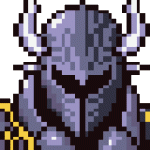Gamepad-based control systems where the player's actions are more directly connected to the character's limbs have hardly been thoroughly explored, and there are some successful examples.
Definitely true. If I'm not mistaken each time they have been explored something amazing has come through to the industry. Atleast for the most part. Intuitive gameplay that allows you to feel more connected to the characters action leads to a sense which is only garnered commonly/correctly in the FPS genre in my opinion.
The Skate games (where the right stick controls foot position / balance, and tricks are pulled off by flicking the stick in a way somewhat representative of the real movement) offered a refreshing change from the Tony Hawks Pro Skater series (where trick controls are almost entirely abstracted, and arbitrary button combinations execute tricks).
First off thanks for the great comparison between Tony Hawks Pro Skater and the Skate series. It is a great example of the direction I aim to head in with this project. Games like Fable and Elder Scrolls have traditional mechanics which are long standing. They are long standing because they work and the traditional stigma is "why fix/change something if it works?". I say if you think you can fix/change it for the better then it is your obligation to try.
There was a game which accomplished the combat system you're after, called Die by the Sword, which gave you fine(esque) control over your weapons, and upper/lower torso (IIRC). I'd recommend trying it out if this is the combat style you're after.
IMO the DbtS execution of combat was flaky at best.
Omg, you do not realize how much help you've provided by giving me a source of exposure such as this one. This is a perfect example to learn from in so many ways. Although the controls seem awkward and faulty/flaky at best as you said. It is in theory what my concept means to manifest. Thank you for your input Sir StormWaresStudios!!!
_____________
It gets a bit edgy from here on so you can choose to stop reading...
Hotdog vendors do not have to QA their hotdogs with every possible combination of condiments. And the cost of adding each new condiment to their stall is negligible.
For game developers, it's not so simple. Every feature needs a certain amount of time and money invested in it to implement. Optional features can have the annoying additional side effect of multiplying the testing effort, which can substantially increase the overall cost of a feature, far beyond the value it provides. You have to ask yourself - is the feature worth the cost?
Here we go again with the miunderstandings thanks to tunnel vision being applied to analogies and metaphors. Atleast this time the metaphor AND the intended example were misunderstood so I'll clarify both.
I need to clarify something about my use of the hot dog analogy/metaphor. The way I stated it was meant to speak for the gamers who have the option to play with or without the advanced controls. One can be your cup of team while the other just isn't.
I didn't imply that the reason for adding a second control scheme is just because It seemed like a fancy second choice. I know decisions of the nature aren't to be taken lighty or just for the sake of taking them. In this case the feature IS the game to a certain degree.
Your concern boils down to cost of testing extra features which in the long run might not truly be worth it. Understood, however, the control scheme is one of my main reasons for the designing/developing this game to begin with. How can I scrap it without giving it a good shot?
_______
I'm excluding the name of the poster here due to not exactly feeling they deserve me speaking/typing their name. However, they brought across some points I'd like to defend against/expand upon.
2) Users can move + attack at the same time. I can imagine the most popular strategy might be circling strafe around an opponent while firing a ranged weapon (or swinging a melee weapon). How would the stationary player keep up with a circle strafer?
A partial (mildly detailed) explaination as to the counter situation for both questions you posed were given. In short, everyone CAN move and attack. The damage difference between a stanced/poised fighter and one who is trying to poke ane strafe is substanstial enough that one landed blow from a stanced fighter who lines himself up is enough to compensate for multiple moving/glancing blows.
[rollup='Self Quote ']
The camera will hypothetically be in a position to see whats in front of you (your hit box) and just beyond melee range. The tricky part comes with the fact that fighting in a linear path is unrealistic and people WILL get off to your side. In fact a large part of the combat in real life IS avoiding someones hit box while keeping them within yours. With this in mind, enemies will aim to move in position towards your blind sides while attacking.
This is where another part that I considered would be useful comes into play, how combat is initialized. I mentioned that entering and exiting combat is as simple as pressing a bumper. With this in mind I can slip out of my rigid fighting stance back into my the standard "move with one stick, look with the other" range of motion. Returning to default controls means it would literally take a second to align yourself with an enemy who is most likely still engaged in combat. Even if they too have disengaged, they can't be too far away with the small window it takes to disengage and look.
[/rollup]
3) Like others have pointed out - it might not be a good idea to develop two distinct control schemes simultaneously. Competitive RTS and FPS for example, have just one control scheme for both "pros" and casuals (e.g. WASD move, mouse click fire). Hardcore players can still have an "advantage" by mastering the control system to a high level of skill.
Projects run into time and resource constraints all the time. It is really important for the designer to cut superfluous portions of the game and focus on really selling the key features.
It may not be a good idea to work on two control schemes but its part of my mission statement to get this control scheme up and running. Its a main feature but, I realized that this main feature might cause a loss of interest among a certain demographic. Due to this fact I found it necessary to implement a simple "default" combat system as well.
The comparison between an fps and what I aim to do is null and void when all the points I'm making during this reply are taken into account.
You also need to take into account that I am a one man team. If this were to become a team where I am now expecting people to put in their own time, then yes I would consider time restraints and how to most effectively manage the teams time. As of now it is not a "supfluous portion" of the game, it is in fact a key point in what makes the game what I aim it to be.
4) "When stationary, the system will in theory perform coinciding footwork by matching the upper bodies movement in a predictive anatomically correct fashion." is too vague. You need to provide details of exactly how this system will work and how you are planning to achieve this.
Sure shows how much you read before attacking/criticizing my work. I posted an explaination for this with some moderate detail.
[rollup='Self Quote']
The default state within the combat system is stationary. By this I do not mean to imply you stand face to face waving weapons at each other with your arms flailing. You are using both joysticks to emulate motions with your arms leaving no other way of moving your body (the D pad is an unrealistic solution for footwork). What I proposed is using anatomically correct responses of your feet according to what you do with your upper body.
In real life, when you swing a bat your waist turns. This naturally leads your legs into a position where they will follow through with your upper body. They line themselves up according to what your upper body is doing/has done. Due to my martial arts training I'm pretty familiar with how my body reacts when I perform certain actions. If I pay attention, I can feel how my body aligns itself to move in unison and how one action connects best in fluidity with the next motion. This is the basis of how I want that mechanic to work and what I meant by coinciding footwork. .
Let say your character is holding a short sword and he jabs, the natural response for his lower body is to step into the jab. Ideally to each upper body response the lower body has a proper anatomical reaction.
Other examples of motions and how the mechanic should cope:
Cross slash (diagonal swing of the sword which heads in a downward motion)
The Character will be throwing their body weight from their shoulders downward, from one side of their upper body, to their waist on the opposite side. In real life, the side that they will be coming down on, will need to brace itself for their weight or they can hypothetically lose balance. The leg on the side bracing itself should automatically step out and to the side.
Lets assume the next example happens immediately after the last has occurred to better showcase the concept.
Full fledged forward thrust (pulling the sword in towards themselves and then thrusting it outwardly)
A thrust isn’t very effective unless stepped in to. So from the characters last position of having one foot slightly out they would ideally want to take their other leg and step in with that one as they thrust their sword forward. The player wont have to do any of this footwork actively, it would already be in motion as he is inputting the commands to pull the sword back and begins to thrust.
Real fights have movement in them and I would hate to compromise footwork for the sake of my proposed arm control.
[/rollup]
5) Also, the "do anything, become anyone medieval sandbox RPG/MMORPG with realistic complicated combat system" is a very common idea that gets posted on this forum a lot. It isn't anything "ground breaking" or original.
No need to answer this one, its obviously a haters remark lol..
__________
This post was a bit long and I'll most likely get flamed for its length but I responded to mutiple people and formatted it (as usual) to allow readers to stop where their question/curiosity ends.
Hope this answers enough/brings up other points/garners more interest in my work.
Thank you all for your feedback/input/suggestions
Sin ?§• ??§?










